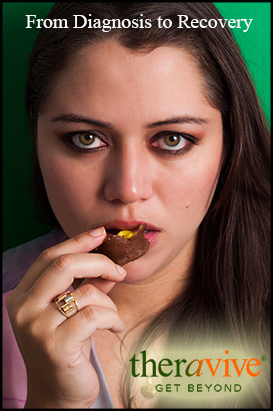 24 Million
24 Million
It is extremely difficult to watch someone you love, especially your own child, hurt themselves and even risk their life with destructive eating disorder behaviors. The National Association of Anorexia Nervosa and Associated Disorders (2014) reports that up to 24 million people in the U.S. struggle with an eating disorder (ANAD, 2014). Eating disorders affect both males and females, but the diagnosis is much more common in women and girls. The most troubling statistic is that eating disorders have a very high mortality rate compared with other mental illnesses (ANAD, 2014).
These disorders are very dangerous, and must be taken seriously and treated by a professional. As a parent, it can be difficult to know what to do. You want more than anything to help your child, even while you and your family struggle with conflicting emotions, including fear that your child will seriously harm himself or herself, or even die.
Eating Disorders are a Mental Illness
Your child may tell you he or she is just on a diet, or trying to cut unhealthy food out of his or her diet. So, how do you know if his or her eating behaviors are not normal or even dangerous? Some children are picky eaters and any child can have periods of time when they just don’t eat very much, or cut out certain foods. However, eating disorders include extreme behaviors that are really about much more than just food or dieting. Using the Diagnostic & Statistic Manual of Mental Disorders (DSM 5), healthcare professionals can diagnose the following eating disorders in adults, adolescents, and children:
· Binge Eating: This is a disorder in which the child has repeated episodes of eating very large quantities of food in a short period of time. They may feel out on control before and during the episode, and then feel guilt, shame and embarrassment afterward. It usually occurs at least once a week, and the child may try to hide the binge eating from friends and family (The New DSM 5, 2014).
· Anorexia Nervosa: This disorder primarily impacts girls and young women, and includes excessive dieting and an extreme fear of gaining weight. The child/adolescent will also struggle with a distorted body image. She may be 5’7” tall and weigh 100 pounds, and feel she is really fat (The New DSM 5, 2014).
· Bulimia Nervosa: This disorder is characterized by episodes of binge eating followed by behaviors like self-induced vomiting or laxative abuse to prevent weight gain (The New DSM 5, 2014).
Your child may be diagnosed with one or more of these disorders, as they sometimes occur together and overlap each other. Regardless of the diagnosis your child receives, it can be very confusing and frightening for you and other family members. Chances are that you and your family have struggled with your child’s disordered eating behaviors for some time before receiving the diagnosis and starting treatment.
 Recognizing and Acknowledging Your Child’s Eating Disorder
Recognizing and Acknowledging Your Child’s Eating Disorder
The diagnosis of an eating disorder can be difficult for both the child and their family to accept. He or she may deny there is a problem, and minimize his or her behaviors. But you know something is wrong. The professionals at the National Eating Disorders Association (NEDA) (2014) remind us that disordered eating develops as a response to emotional pain. The behaviors are an unhealthy attempt to cope with and manage painful feelings, and maintain a sense of control. As a parent, you must become educated about the signs and symptoms of an eating disorder, as your child may go to great lengths to hide it from you. When you are concerned, watch for things like:
· Weight loss
· Signs of poor body image, including self-deprecating remarks about his or her body or comparing himself or herself unfavorably to others
· Pre-occupation with his or her weight and how his or her body looks
· Excessive exercising
· Preparing food, but then not eating any
· Withdrawing from activities and friends
· Hiding food or hidden laxative containers
· Going to the restroom right after eating
If you see these signs (NEDA, 2014), it’s time to talk with your child (The New DSM 5, 2014). But remember that an eating disorder is about your child’s emotional well-being, more than about food. It’s important to separate your child from the disorder. He or she is not “an anorexic”, but a young person struggling with symptoms of a very painful and scary disorder. Be honest and share your concerns in a nonjudgmental way, being careful not to overstate your own fears. Let your child know that you can cope with whatever happens. Expect that your child may deny any problem or become defensive. He or she may try to reassure you that everything is fine, but encourage him or her to talk, and also share what you have learned about eating disorders.
Reassure your child that you are not angry, and you don’t blame him or her for their behaviors. Listen to your child's concerns and feelings and don’t push for too much change right away, but do request that he or she go to the doctor with you. Talking with your child about her eating behaviors is difficult, but it’s important for him or her to know that you see what is happening and you are an ally to help him or her recover.
Taking Care of Yourself & Your Family
Supporting your child through treatment of and recovery from an eating disorder is a challenging journey for all of you. The diagnosis of an eating disorder impacts the whole family. You and your family may struggle with a great deal of stress and conflicting feelings. You may feel terrified that you will lose your child, while also feeling angry and frustrated with him or her. Some family members may also feel ashamed or embarrassed that a person in their family has an eating disorder. Siblings and other family members may not know what to do, and may need counseling or other support, as well. As a parent, there are things you can do to take care of yourself and your family while also supporting your child.
· Continue to live life, and be sure to keep having fun with others
· Take breaks to relax and unwind
· Accept your limitations, understanding that you can’t “fix” this on your own
· Stay connected to your support network and lean on them when you need to
· Learn to say no when you need to
· Remember to give other children in your family the attention they need
· Keep the lines of communication open
· Attend a support group that enables you to share with others who are going through the same thing
· Talk with a professional counselor to get support and accurate information.
It’s important not to judge yourself during this time. Your child’s eating disorder is not your fault, and any feelings you have are okay. Supporting your child takes tremendous of energy and strength. To stay strong and be there for him or her, you must also take care of yourself.
_________________________________________________________________________________________________________________________________
ANAD. (2014). Retrieved May 22, 2014, from http://www.anad.org/
National Eating Disorders Association. (2014). Retrieved from http://www.nationaleatingdisorders.org/
New in the DSM-5: Binge Eating Disorder. (2014). Retrieved May 21, 2014, from http://www.nationaleatingdisorders.org/new-dsm-5-binge-eating-disorder